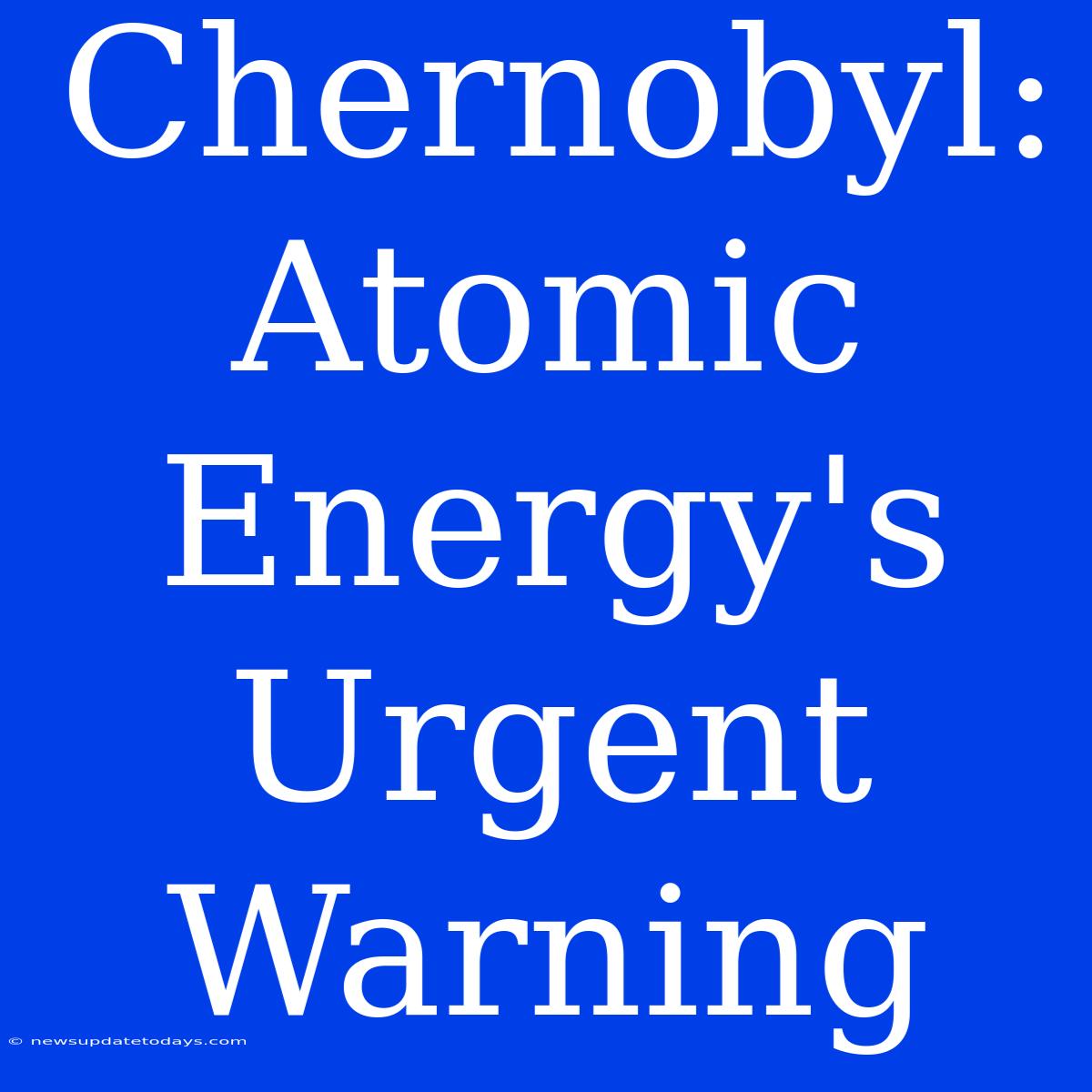Chernobyl: Atomic Energy's Urgent Warning
The Chernobyl disaster, a chilling event etched into history, serves as a stark reminder of the inherent dangers of atomic energy and the urgent need for robust safety protocols. Thirty-seven years later, its legacy continues to resonate, reminding us of the devastating consequences of neglecting safety and the importance of learning from past mistakes. This article delves into the Chernobyl catastrophe, exploring its causes, impact, and the crucial lessons it imparts regarding the future of nuclear power.
The Catastrophe Unfolds: A Chain of Failures
The Chernobyl Nuclear Power Plant's Reactor 4, on April 26, 1986, experienced a catastrophic meltdown during a flawed safety test. This wasn't a single point of failure but a confluence of factors, including:
-
Poor Reactor Design: The RBMK-1000 reactor design, unique to the Soviet Union, lacked crucial safety features found in Western reactors. Its positive void coefficient meant that as the water level decreased, the reaction rate increased, leading to an exponential escalation of power.
-
Inadequate Training and Oversight: Operators conducting the test were insufficiently trained on the reactor's intricacies and lacked a clear understanding of the potential risks. Supervisory oversight was also lacking.
-
Human Error: A combination of procedural violations and operator errors during the test triggered the chain reaction leading to the explosion and fire.
-
Lack of Containment: The reactor lacked a robust containment structure to confine the radioactive fallout, resulting in widespread contamination across a large area.
These interconnected factors demonstrate how even a seemingly small procedural error, when compounded by poor design and inadequate training, can lead to catastrophic consequences.
The Devastating Aftermath: A Landscape of Despair
The immediate aftermath was horrific. Two workers died on the night of the accident, and dozens more succumbed to acute radiation sickness in the following weeks and months. The explosion released massive amounts of radioactive material into the atmosphere, blanketing vast swathes of Ukraine, Belarus, and Russia. This led to:
-
Mass Evacuation: Hundreds of thousands were forced to evacuate their homes, leaving behind their lives and livelihoods. The abandoned city of Pripyat stands as a chilling testament to this forced exodus.
-
Long-Term Health Effects: The long-term health impacts of Chernobyl continue to this day, manifesting in increased rates of cancer, thyroid disorders, and other health problems for those exposed to radiation.
-
Environmental Damage: The surrounding environment suffered severe damage, with significant contamination of soil, water, and wildlife. The Chernobyl Exclusion Zone remains largely uninhabitable.
Lessons Learned: A Call for Enhanced Safety
The Chernobyl disaster highlighted critical weaknesses in reactor design, operator training, and regulatory oversight. It served as a pivotal moment in nuclear safety, prompting significant changes worldwide, including:
-
Improved Reactor Designs: Modern reactors incorporate enhanced safety features to prevent similar accidents.
-
Stringent Safety Regulations: International regulations and safety protocols have become more stringent.
-
Enhanced Operator Training: Operator training programs have been significantly improved.
-
Improved Emergency Response Planning: Emergency response plans have been developed and tested to handle nuclear accidents more effectively.
While the world has learned from Chernobyl, the disaster’s legacy underscores the ongoing importance of maintaining rigorous safety standards and investing in continuous improvement. The Chernobyl Exclusion Zone itself remains a sobering reminder of the potential devastation of nuclear accidents and a powerful testament to the need for constant vigilance.
Keywords: Chernobyl, Nuclear Disaster, Atomic Energy, Reactor Meltdown, Radiation, Safety, Nuclear Power, Pripyat, Exclusion Zone, Environmental Damage, Health Effects, Reactor Design, Human Error, Safety Regulations.

